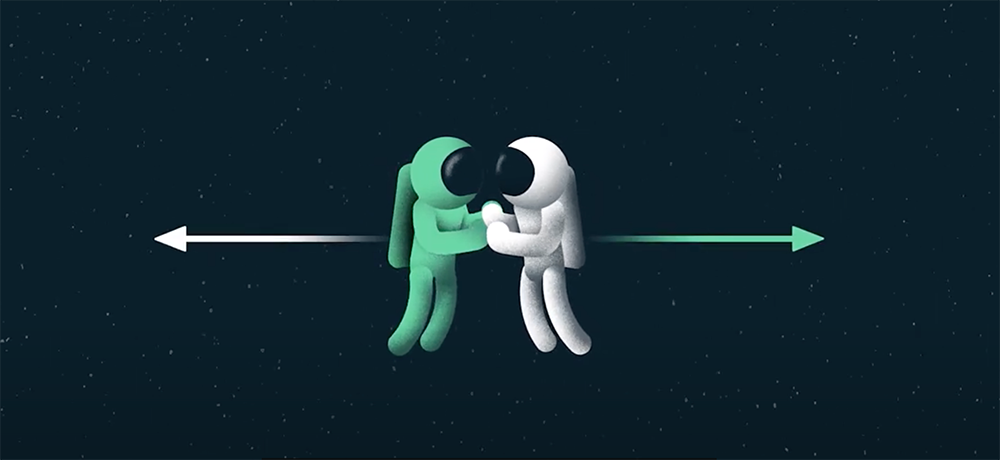Alumni spotlight: Understanding the gravity of the situation was grad’s goal
Media Arts and Design
By Jessica Kronzer, staff writer
Jesse Sands, a 2020 SMAD graduate in the interactive design concentration, has created an animated astrophysics explainer video to teach middle or high school age students and undergraduate students in college.
When combined with an instructor asking questions and engaging students, it can serve as the foundation for interactive lessons.
“I think that physics, especially astrophysics, has a lot of strange, bizarre and exotic concepts and theories that are really interesting,” Sands said. “This was a kind of a passion project from the get-go.”
The project — called “What is Gravity?” — started as independent study project that fulfilled Sands’ astronomy minor — and is now being used in at least one Virginia high school. The online interactive video covers four units of an astronomy textbook in one video. The video progresses chronologically from 340 BCE through 1916 to explain how current gravitational theory was developed.
Sands said he was inspired by science-based explainer videos on YouTube.
 “It's very much layman's terms,” Sands said. “A lot of the animations are exaggerated to show the concepts in a really simple way.”
“It's very much layman's terms,” Sands said. “A lot of the animations are exaggerated to show the concepts in a really simple way.”
To accommodate students of different grade levels, Sands left out some of the details about concepts and is working on providing instructors a lesson plan they can use to generate classroom discussions after watching the video.
Lake Braddock Secondary School, Sands’ high school, is using his video as an educational aid in physics classrooms. Sands also passed the project to several other teachers, including faculty in JMU’s astronomy department.
Prof. Harold Butner, Sands’ adviser, assisted Sands on his original script, but Sands conducted the detailed research. As an astronomy professor, Butner shared with Sands other people’s common misconceptions about gravity And Butner said he was impressed with Sands’ illustrations of the concepts.
“I would have done probably much simpler video, or one that would have used real demos … perhaps to illustrate the point,” Butner said. “It was very critical that he had SMAD.”
Butner said Sands took on multiple roles for the video that would normally be conducted by several employees in a professional setting. Sands acted as “producer, director, chief artist, chief script writer [and] chief researcher.”
Sands created the 20-minute video using a combination of Adobe After Effects and coding. Sands taught himself how to design the stop-motion video, which he said he had wanted to learn since he was 11. He said he watched roughly 100 hours YouTube video tutorials and used trial-and-error to develop his skills.
“It's almost a collage or scrapbooking design style,” Sands said of how he created a look for the planets. “I just use a color and then I put a texture that I closely identify with the surface of that planet’s pictures.”
For example, Sands used a watercolor effect to paint the moon a “grayish white,” and he made the Earth a “blueish green” circle with “driftwood texture.”
While the video was originally meant to be projected on the ceiling of JMU’s planetarium in Miller Hall, Sands shifted its design to make it suitable for viewing in an online environment.
“The main goal for me is to get kids and people who are fringe-interested more excited about learning astronomy and to show how neat it is, how engaging it can be and how it's not just equations on a paper,” Sands said. “It's more than that: gravity governs our universe.”
